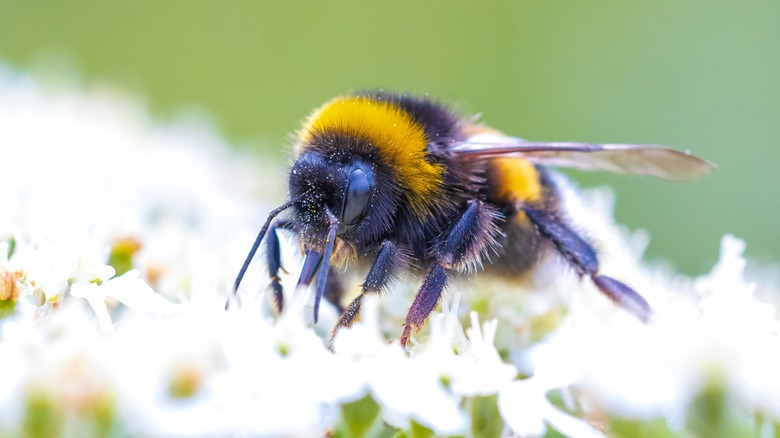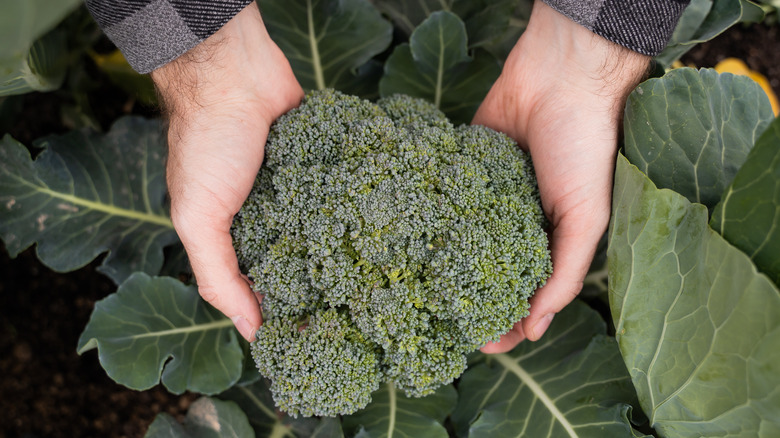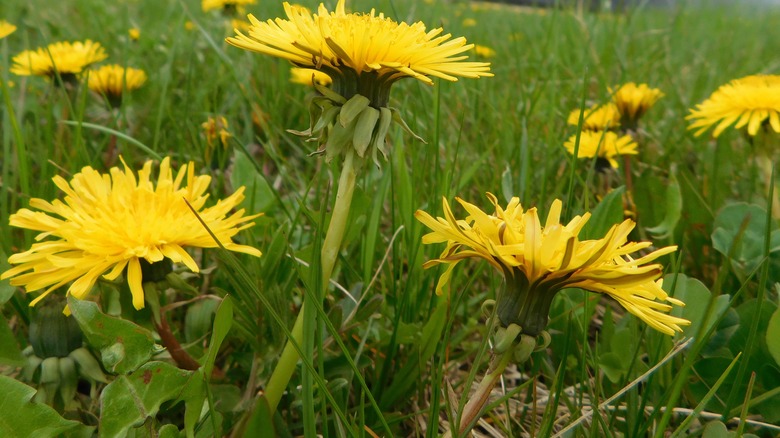World Bee Day: Here's How To Create Some Buzz For The Pollinators
Are you someone who is fascinated by fuzzy bumble bees, following their progress through your garden's blooms with interest? Or are you the person who runs from them screaming, terrified of their sting? Whether you're this buzzy insect's biggest fan or you prefer to keep them at a very safe distance, there is one thing both sides can agree upon. This tiny busy bug does a whole lot of bee work and is very important to the future of humanity and the ability to eat.
In honor of World Bee Day — yes, May 20 is dedicated to this black and yellow winged laborer — here are a few interesting facts about these master pollinators. CNN shares that when bees spot a potentially perfect nest, they do a waggle dance. This captures the attention of others bees who then go to check out the real estate and join in on the dance until they reach a consensus of about 20 to 30 of their brethren. They, literally, are doing the happy dance.
According to the WWF, scientists have managed to teach the buff-tailed bumblebee how to "score a goal in 'bee football' in return for a sugary treat." And National Geographic Kids says that these expert fliers can reach a speed of 25 kilometers per hour, and the queen bee can produce about 2,500 eggs a day during the summer. That's a lot of potential baby bees. Yes, bees are amazing little creatures, but how do they impact our food chain?
Much of our everyday produce relies on pollination by bees
The next time you wander through the produce aisle, you may want to thank a bee for many of your glorious fruits and veggies. According to Fox, the U.N.'s Food and Agriculture Organization says that people rely on plant life for more than 80% of their food and that the loss of pollinators could threaten this important source of sustenance.
Earth Day adds that bees aid the pollination of roughly 90 domestically-grown commercial crops and 35% of farmed produce. And the FDA warns that crops including "apples, melons, cranberries, pumpkins, squash, broccoli, and almonds, to name just a few" rely on pollination by bees. Unfortunately, the populations of these helpful creatures are dwindling in huge numbers and there are foods we may not have around much longer. So, why are the bees dying?
There seems to be a few reasons for the serious decline of bee populations. The David Suzuki Foundation points to the indiscriminate use of pesticides, lost farmlands, and urban sprawl as possible causes. And the FDA adds parasites and bacterial diseases to the mix. The bees seem to have a large number of obstacles stacked against them, but there are ways that you can help their populations to thrive in your area. But how can you become a hero to your buzzy buddies?
Dandelions are perfect for feeding hungry spring bees
One of the simplest ways to promote bee health is to plant their favorite blooms. According to the Farmer's Almanac, bees species vary by the length of their tongues, so it is important to have plants that accommodate all types. A mix of columbine, honeysuckle, daisies, asters, and sunflowers provide something for everyone. Herbs are a great addition as well. The Farmer's Almanac adds that bees can't see red, so they aren't attracted to blooms of that hue.
Consumers should also think twice before eating honey. PETA recommends that we allow bees to keep their honey as they rely on it for nourishment. And the WWF says that we can rescue a lethargic bee by offering it a "teaspoon of white granulated sugar with one teaspoon of water, putting it on a plate or dripping it on a flower."
And don't kill your dandelions. According to several urban beekeepers (per Weather Network), bees need nourishment in the spring and dandelions are readily available to them during one of their hungriest times. Home owners across the nation have, historically, been conditioned to perceive this yellow-flowered weed as an enemy, but they are a great friend to this hard-working pollinator. So leave them "bee."


